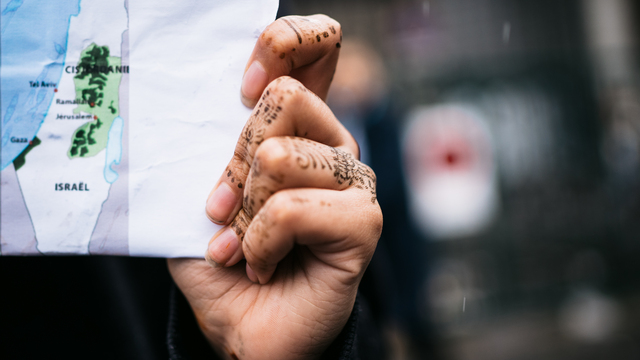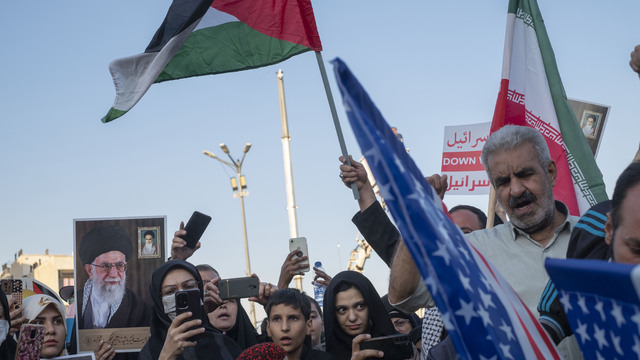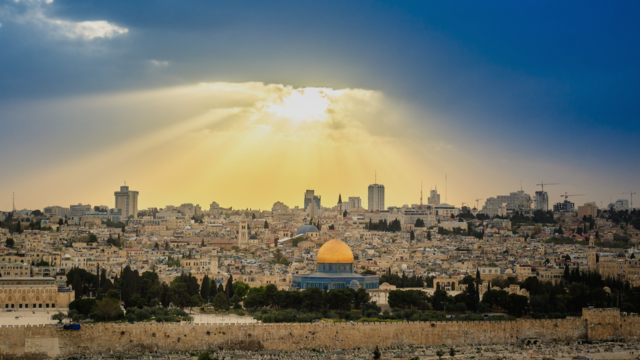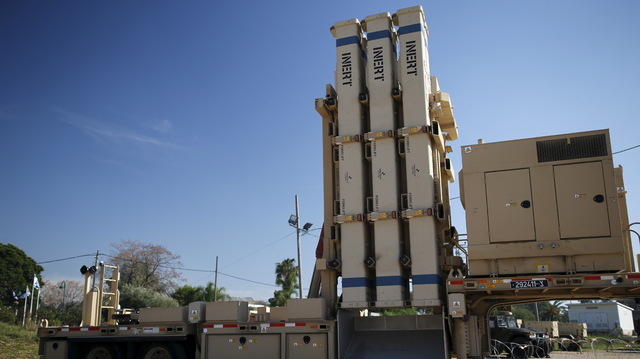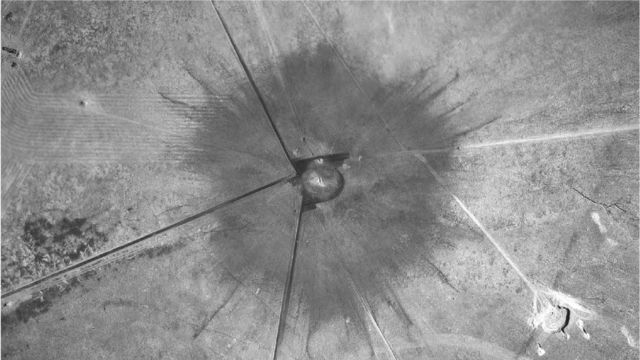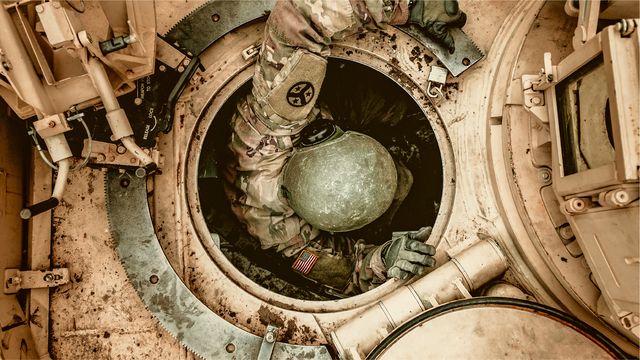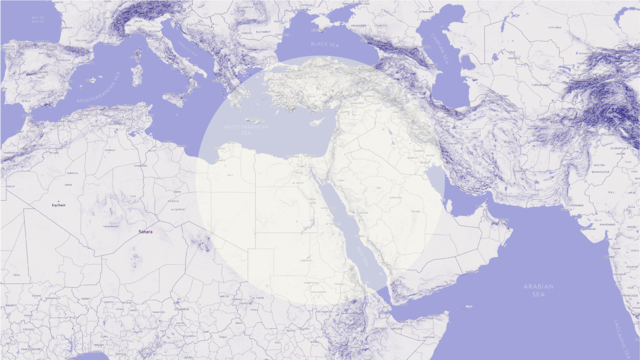Conference on the Establishment of a Middle East Zone Free of Nuclear Weapons and Other Weapons of Mass Destruction
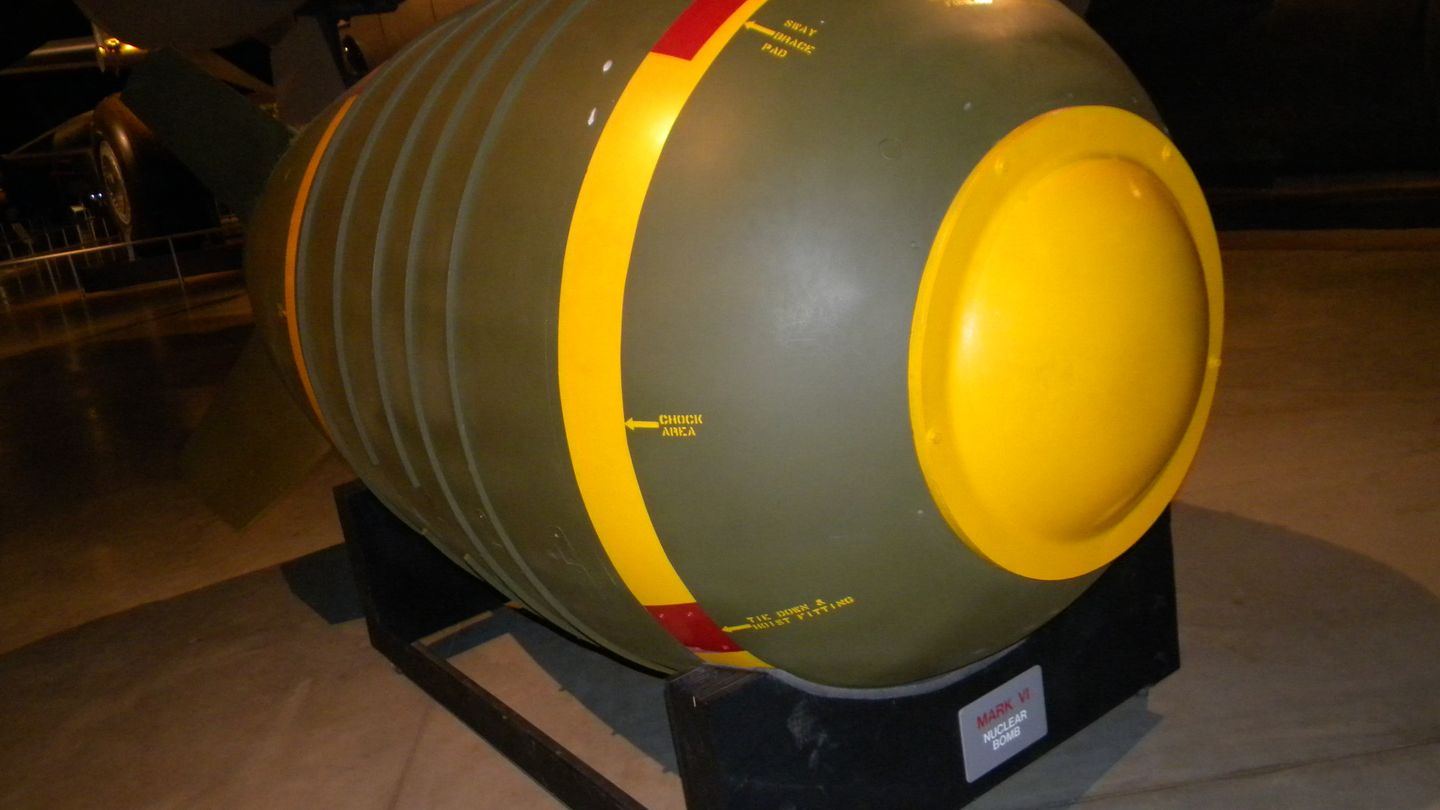
Miroslav Tůma, coworker of the Center of International Law, elaborated on the question of establishment of a Middle East Zone Free of Nuclear Weapons and the Other Weapons of Mass Destruction. The conference was held at the Headquarters of the United Nations in New York at the end of November 2019. What are the positions of the session attending sides? Is it possible to persuade USA and Israel to participate at this negotiations with diplomatic means?
The historically first session of the Conference on the Establishment of a Middle East Zone Free of Nuclear Weapons and Other Weapons of Mass Destruction was held on 18–22 November 2019 at the United Nations Headquarters in New York, pursuant to General Assembly decision 73/546. Twenty three Middle Eastern states, four observer states (China, France, Russia, and the United Kingdom), three relevant international organizations (the International Atomic Energy Agency, the Organisation for the Prohibition of Chemical Weapons and the Biological Weapons Convention Implementation Support Unit) and some other international organzations e.g. the LAS, the OIC and the EU, participated in the session, which was presided over by Jordanian Ambassador Sima Bahous. At the open sessions, non-governmental organizations took part as well. The United States and Israel declined the invitation to take part. In the conclusion of the conference, the participating states consensually approved the seven-point Political Declaration, which has a general and proclamatory character, and is an appendix to the Final Report (A/CONF.236/6).
The negotiating process of the Nuclear Non-Proliferation Treaty (NPT), and its approval and entry into force in 1970 significantly facilitated the creation of zones free of nuclear weapons in various regions and individual countries. Their constitution in accordance with Article VII of the NPT has been an important and effective measure for the geographical reduction of nuclear proliferation. The zones are also an important contribution to the fulfillment of the dual common goal, which is to achieve global nuclear non-proliferation and global nuclear disarmament. Nuclear-weapon-free zones can be constituted in international uninhabited spaces, e.g. Antarctica, outer space and celestial bodies, or high seas and seabeds beyond national jurisdiction. Another option is regional treaties for some inhabited spaces, including continental shelves and exclusive economic zones. Since 1999 the constitution of zones has been arranged by The Guidelines and Principles adopted at a session of the UN Disarmament Commission. The Guidelines stress, among other things, that all the countries of the region involved must express their free will and consent during the negotiations of the given agreement and the necessity for all states to respect the relevant zone. Their entry into force is not dependent on the consent of the five declared nuclear weapon states, which are permanent members of the UN Security Council (the USA, the RF, France, the PRC and the United Kingdom). However, the possible objections of the mentioned states as regards the creation of the given zone influence the acceptance of the decision about their signing the related treaty, the respect for the zone and they granting of so- called negative security assurances, that is, statesʼ commitments not to use their nuclear weapons against participating states of the respective nuclear-weapon- free zone.
At present, zones free of nuclear weapons cover approximately one hundred countries in Latin America and the Caribbean (the Tlatelolco Treaty, 1967), the South Pacific (the Rarotonga Treaty, 1985), Southeast Asia (the Bangkok Treaty, 1995), Africa (the Pelindaba Treaty, 1996) and Middle Asia (the Semipalatinsk Treaty, 2006). Single-country zones free of nuclear weapons have been declared by New Zealand (1987) and Mongolia (1992).
From the perspective of strengthening international security the declaring of zones free of nuclear weapons or other weapons of mass destruction, which include chemical and biological weapons, has been especially important in crisis regions, including the Middle East. Since the Second World War the Middle East region has ranked among the most high risk regions of the world.
In the region there were several Arab-Israeli wars since the creation of the State of Israel in 1948. In the period of 1980–1988 there was the Iraqi-Iranian war, which was provoked by Iraq. After the occupation of Kuwait by Iraq in 1990 an international coalition led by the US was created with the consent of the UN Security Council, and it forced the Iraqi forces out off the Kuwaiti territory they occupied. In 2003 the US, as the leader of the so-called coalition of the willing, carried out an invasion of Iraq without any credible proof of Iraqʼs ownership of weapons of mass destruction and also without the UN Security Councilʼs consent. The US occupation of Iraq, which lasted until 2011, resulted in the overthrowing of Saddam Husseinʼs Sunni dictatorial regime but it had unfavourable consequences for the further development in the region.
During the last few years, the situation in the Middle East has been characterized by dramatic waves of unrest, protests, civil wars, uprisings and revolutions. While Assadʼs regime in Syria was relatively successful at stabilizing the situation throughout the majority of the Syrian territory with Russian and Iranian military assistance, in Libya and Yemen civil wars are still in progress. The so-called Islamic State has been suppressed in Iraq and Syria but its jihadist supporters still continue in their terrorist activities on a limited scale. The development of unrest in the Middle East eventually grew into conflicts involving the regionʼs religious background, which is represented by the two main rivals in the region, namely Sunni Saudi Arabia and Shiia Iran, which continue to accuse each other of supporting terrorism. Turkey enforces its power-related interests, but with limited military force, in the region as well. The recent demonstrations in Iraq and Lebanon, two countries with a strong Iranian influence, were oriented not only against the corruption of the ruling governments and their failure to solve the critical social and economic situation, but they often had a nationalist anti-Iranian orientation as well. Also the regional security situation has long been negatively influenced by the lasting unresolved Israeli-Palestinian relations.
The majority of the Middle East countries are not participating states of one or more of the international agreements dealing with weapons of mass destruction. These agreements are the Bacteriological (Biological) and Toxin Weapons Convention (BTWC), the Chemical Weapons Convention (CWC), the Treaty on the Non-Proliferation of Nuclear Weapons (NPT), the Treaty Prohibiting Nuclear Weapons (TPNW) and the Comprehensive Nuclear-Test-Ban Treaty (CTBT). A lot of these countries also have some kind of research, development or weapon program for dealing with the mentioned weapons. In the region chemical weapons have been already used on a mass scale, namely by the Iraqi regime during the Iraqi-Iranian war and, several years later, against Iraqi Kurds as well. Also during the civil war in Syria the use of chemical weapons was identified not only on the side of government forces but also on the side of various radical jihadist groups. In the 60ʼs, due to imminent security threats from Arabian states, Israel started to develop and produce nuclear weapons as well. According to the Stockholm International Peace Research Institute (SIPRI), in January 2019 the country had about 80–90 pieces of these weapons, and thus it is the only Middle Eastern state that owns nuclear weapons, although it follows an official policy of neither to confirming nor denying this fact. And unlike all the Middle Eastern Arabic countries and Iran, Israel is not a participating state of the NPT. Furthermore, for several years Iraq and Libya carried out secret weapons of mass destruction military programs, which they later abandoned. Iran allegedly had a secret nuclear weapons military program until 2003 as well. In 2015 the permanent members of the UN Security Council, Germany and the EU concluded with Iran the so-called Iranian nuclear deal (JCPOA). With the help of various limitations of the countryʼs civilian nuclear program and intrusive IAEA inspections, this agreement provided long-term guarantees that Iranʼs nuclear energy would only be used in peaceful ways in exchange for reductions of the sanctions against Iran. In 2018 the US pulled out of the deal and once more started implementing a wider sanctions regime against Iran. The other participating states of the deal are still trying to maintain the JCPOA and keep Iran in it. For example, Germany, Great Britain and France are helping Iran to overcome the US sanctions with a trade mechanism called INSTEX (the Instrument in Support of Trade Exchanges), which Belgium, Denmark, Finland, the Netherlands, Norway and Sweden joined at the end of November 2019.
The first official request for a Middle East zone free of nuclear weapons was made on the basis of a proposal by Iran with sponsorship from Egypt in 1974. The request was made in the form of a UN General Assembly Resolution. The resolution requested that all potential participating states declare that they will give up their right to produce, try to obtain or own in any way nuclear weapons and nuclear explosive devices, and that they will not give a third country permission to deploy such weapons on their territory. The resolution also demanded that the participants include all of their nuclear facilities in the IAEA safeguards verification system. In the following years, in the new version of the mentioned resolution proposed by Egypt, there was a call to ban not only nuclear weapons but also other weapons of mass destruction in the Middle East zone. Since 1980 till 2018, the resolution was always accepted consensually at the UN General Assemblyʼs sessions.
The approval of the Resolution on the Middle East in the framework of the set of other approved decisions at the 1995 Review and Extension Conference of the Parties to the Treaty on the Non-Proliferation of Nuclear Weapons may be considered as a significant landmark in the mentioned effort. For Arabian countries and Iran the adoption of the Resolution was then a necessary condition for their support of other decisions of the mentioned NPT conference. The Resolution, whose co-sponsors were the US, the RF and the United Kingdom, appealed above all to the Middle Eastern countries to establish an effectively verifiable Middle East zone free of all weapons of mass destruction. According to the Resolution, all NPT participating states and the five so-called declared nuclear weapon states should do their utmost to create the zone as soon as possible. The Action Plan of the Final Report of the 8th NPT Review Conference that was consensually agreed in 2010 included the same goal as well.
The Conference on the Establishment of a Middle East Zone Free of Nuclear Weapons and Other Weapons of Mass Destruction should have been originally held in Finland in 2012 but was deferred indefinitely. The US Ministry of Foreign Affairs justified this delay by the complicated developments in the region and the different views among the potential participating states on the conditions
of how it should proceed. The RF and the United Kingdom as two other co- sponsors of the Resolution published similar positions and, together with the UN Secretary General Pan Ki-moon, called for holding the conference in 2013. But the conference was not held then either. In 2015 the Final Report of the 9th NPT Review Conference included, among other things, a provision pertaining to this problem that stipulated the specific time when the conference was to be held. But the wording was not acceptable for the US, the United Kingdom and Canada, and therefore the Final Report was not consensually approved, and the review conference ended in failure.
However, in the following years the Arabian countries led by Egypt and Iran succeeded in arranging a vote on the specific time of the conference at a UN General Assembly session, where the principle of consensuality does not apply during voting. In 2018 the proposed resolution was approved by a majority of the votes and in 2019 the above mentioned first session of the conference could be held, but unfortunately without the presence of the US and Israel.
The risks connected with the weapons programmes of the majority of the Middle Eastern countries, their enormous military budgets and the threat of proliferation of weapons of mass destruction are the main reasons why the Middle East region is at the centre of the international communityʼs attention. The vast majority of the states in the community support the creation of the mentioned zone and the acceptance of various trust-building measures and measures to decrease tensions among the states of the region.
The positions of Arabian countries and Iran on one side and those of Israel on the other towards the creation of the zone are different in spite of the fact, that in general none of the Middle Eastern countries are against the creation of the zone. While the first group of states are connected by their desire for a settlement of the regional security matters and a solution to the problem of Israeli nuclear weapons, which they see as a priority, Israel gives preference to the achievement of peace and stability in the region before any negotiations of nuclear matters. These different positions are the core of the current stalemate.
The second session of the above mentioned conference should be held on 16–20 November 2020 at the UN Headquarters in New York again. According to the final report until the term of the session the participating states are to learn about the practical experiences with the implementations of the relevant rules in the member states of already existing non-nuclear zones.
It can be assumed that there will be further diplomatic efforts to overcome the US and Israelʼs negative positions towards their possible inclusion in the start of the negotiationg process. If there is a change in the positions of both countries, the main goal of the Conference – that is, to elaborate a legally binding treaty establishing a Middle East zone free of nuclear weapons and other weapons of mass destruction, on the basis of arrangements freely arrived at by the States of the region – could be fulfilled. In cannot be ruled out that Israelʼs position will be influenced for a certain period of time by further developments in and the result of the deadlock of the internal situation, including the weakening of Prime Minister Netanyahuʼs position due to his criminal investigation. In the US it will depend, among other things, on how the result of President Trumpʼs Congressional impeachment proceedings for his potential unconstitutional activities will influence the result of the presidential election in 2020, and on whether another presidential candidate with a more positive position toward the problem will win it.
So far it is hard to predict how the above mentioned Conference session will be reflected at the 10th NPT Review Conference in 2020. However, it is almost certain that the mentioned issue will be one of the most discussed matters. The result of the NPT Review Conferenceʼs session will thus depend above all on how the matter will be addressed in the wording of the Final Report, which will predetermine the result.

